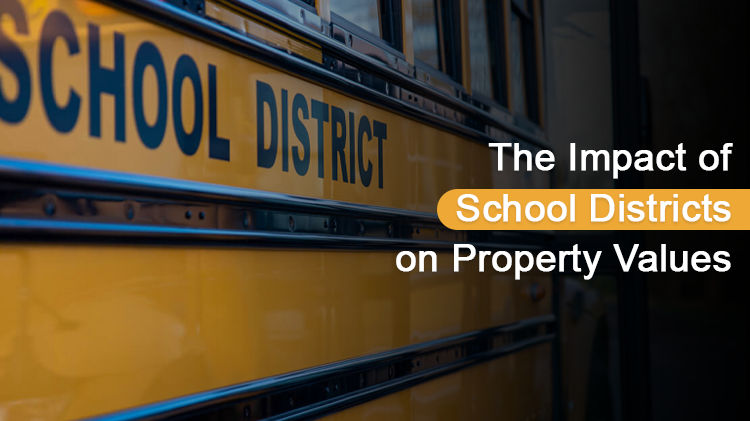
The relationship between school districts and property values is one of the most robust and enduring dynamics in real estate. Whether you are a homeowner, a prospective buyer, or an investor, understanding how educational quality shapes the housing market is essential for making informed decisions. Let’s explore the impact of school districts on property values, which examines the key factors, evolving trends, and economic implications.
Why do School Districts Matter for Property Values?
School districts are more than just educational boundaries, they are powerful determinants of neighborhood desirability, long-term investment returns, and community stability. The quality of local schools often signals the overall health and prospects of a community, the willingness of buyers to pay a premium, and influences both the demand for homes.
Key Reasons School Districts Influence Property Values
|
High Demand for Quality Education |
Families prioritize access to excellent schools, often paying significantly more for homes in top-rated districts. |
|
Perceived Community Quality |
Good schools are associated with safer neighborhoods, better resources, and higher incomes, which attract a broader pool of buyers. |
|
Resale and Investment Security |
Strong school districts provide superior protection against market downturns since their homes often appreciate more and sell faster. |
Quantifying the Impact: How Much do Schools Affect Home Values?
Numerous studies have attempted to quantify the school premium. While figures vary by region and market conditions, the consensus is clear that the differences can be substantial.
Notable Findings
|
Average Value Increase |
Homes near top-rated schools can see a value increase ranging from 10% to 20% or more compared to similar homes in lower-ranked districts. |
|
Test Scores and Price |
A 5% improvement in school test scores can raise home prices by 2.5%. |
|
Price Gaps |
In some U.S. metropolitan areas, home values in high-performing and low-performing school districts might range by up to $205,000 on average. |
|
School Spending |
For every additional dollar spent on public schools, home values can increase by $20, benefiting all homeowners in the area. |
Beyond Test Scores: What Else Matters?
While test scores and academic performance are often the headline metrics, other school-related factors also play a significant role:
|
Extracurricular Programs |
STEM, robust sports, or arts offerings can make a district more attractive. |
|
Community Involvement |
Active parent-teacher associations and engaged local communities enhance school reputations and neighborhood appeal. |
|
Proximity |
Homes within walking distance to schools often command a higher premium than those requiring a drive. |
The Flip Side: Low-Income Schools and Property Value Challenges
The impact is not always positive. Homes in districts with underperforming schools face several challenges.
|
Slower Appreciation |
These homes may see muted value growth and spend longer on the market. |
|
Reduced Buyer Pool |
Fewer families are willing to invest, leading to laower damnd and potentially stagnant prices. |
|
Potential for Turn Around |
On the upside, improvements in school quality through funding, community initiatives, or leadership changes can eventually lead to significant property value gains as perceptions shift and demand increases. |
Conclusion
The impact of school districts on property values is profound, enduring, and multifaceted. High-quality schools boost home prices and describe communities. While emerging trends like online learning may shift the landscape, the foundational desire for quality education ensures that school districts remain a central consideration for buyers, investors, and sellers alike.


.png)


3 Comments